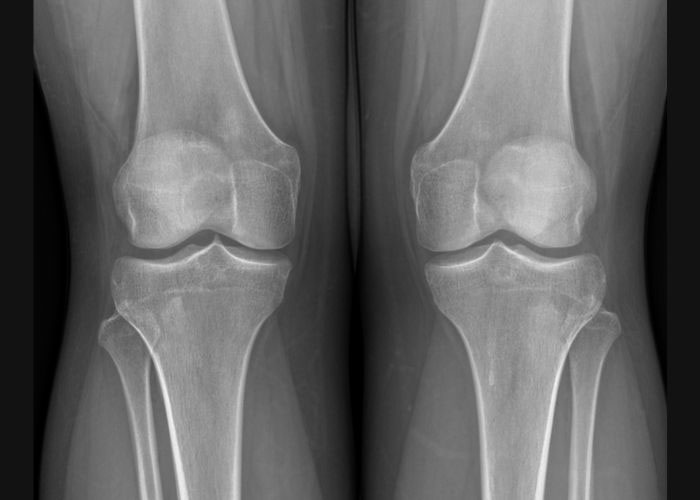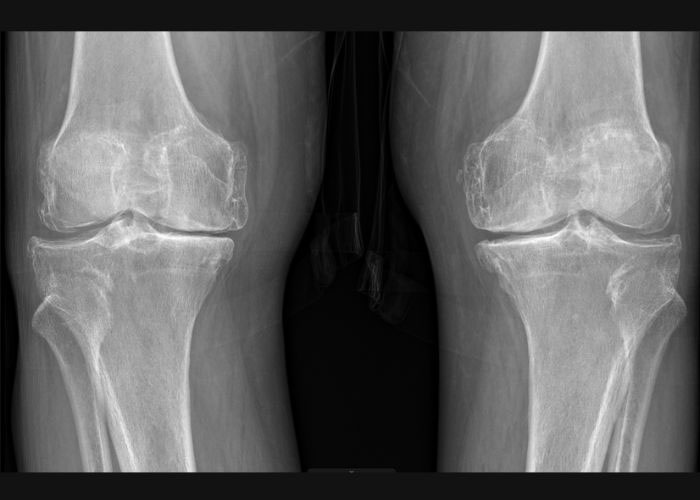Knee Arthritis Specialist
Are you experiencing pain or a crunching or popping sensation in your knee? Doyou have pain and difficulty standing after sitting for a period of time? If so, you may have knee arthritis or knee osteoarthritis. Knee arthritis specialist, Dr. Prem N. Ramkumar is located in Long Beach and serves the Los Angeles, Orange County, and surrounding Southern California areas and treats patients who are experiencing painful symptoms from knee arthritis. Contact Dr. Ramkumar’s team today!

What is Knee Arthritis?
Knee arthritis is inflammation of the joint, either from loss of articular cartilage over a large surface area (osteoarthritis) or a predisposition to the lining of the joint (rheumatoid arthritis). The type of arthritis, the location of arthritis, and the degree of arthritis is important to understand. However, the most important feature of treating knee arthritis is knowing your ability to cope and knowing your personal goals. Dr. Ramkumar will do everything he can to help you avoid surgery, but only you know when you can no longer live with end-stage knee arthritis. If you notice pain, cracking, popping, creaking, or swelling in the knee and find it hard to perform basic activities of life, you may suffer from knee arthritis. The definitive surgical treatment for eliminating knee arthritis is a partial or total knee replacement.
When you have an injury to a small area of articular cartilage, this is considered a focal articular cartilage injury but is sometimes misunderstood to be knee arthritis. This is not the same as knee arthritis because the area of disease is small and thus has many different treatment approaches, including non-surgical and surgical treatment options that can help you return to an active lifestyle. Dr. Prem N. Ramkumar, orthopedic knee specialist, is located in Long Beach and serves Los Angeles, Orange County, and surrounding Southern California who are experiencing the symptoms of knee arthritis and cartilage injury.

Normal Knee

Knee With Arthritis
What are the Symptoms of Knee Arthritis?
If you get out of bed in the morning and your knees are stiff, and it takes a while for you to get moving, or if it hurts to get up after sitting for a long time, arthritis may be the cause. Other knee arthritis symptoms include:
- Swelling and pain in and around the knee joint
- Popping, cracking, or creaking noises coming from the knee
- Feeling like your knee is about to buckle.
- Intense pain caused by vigorous activities.
How is Osteoarthritis of the Knee Diagnosed?
It’s not always easy to diagnose knee arthritis, because subtle early changes in the joint may not always appear on X-Rays. Magnetic Resonance Imaging (MRI) is an additional tool to confirm injury to articular cartilage. Dr. Ramkumar also performs a thorough history and physical examination to best help you manage your condition. If diagnosed with knee arthritis, Dr. Ramkumar will work with you to create the best treatment plan that matches your goals and timeline.
What is the Best Treatment for Knee Arthritis?
Since everyone is different, there is no one way to treat arthritis of the knee. The primary goal of treatment is to get you back to your everyday activities without pain. Treatment can be either non-surgical or surgical. Dr. Ramkumar always prefers to start with non-surgical treatments that may include:
Non-surgical Treatments:
- Non-steroidal anti-inflammatory medicines (NSAIDs) to alleviate pain
- Physical therapy to strengthen knee muscles, stabilize the joint, and decrease pain
- Weight loss to reduce the amount of load across the knee
- Corticosteroid or Hyaluronic acid injections into the knee
Once all non-surgical options for knee arthritis have been explored and if you still have not experienced pain relief, surgery performed by Dr. Ramkumar may be an option. The surgical treatments offered to you will depend on your diagnosis. They may include one or more of the following procedures:
Surgical Treatments:
- Arthroscopic Knee Surgery: In certain situations where the articular cartilage injury is small and the surrounding articular cartilage is otherwise healthy, this may be a reasonable option. This also allows Dr. Ramkumar to address any other injuries simultaneously, like meniscus tears.
- Cartilage Transplant: In younger patients who have persistent pain, supportive imaging, and high demand goals with moderate articular cartilage injury and healthy surrounding articular cartilage, the injury may be grafted with cartilage from another portion of your knee (where articular cartilage is unnecessary for bearing weight) or from donor tissue.
- Osteotomy: The procedure created a controlled fracture in the leg to realign the joint, relieve pain, improve joint function, and slow the progression of end-stage osteoarthritis.
- Partial or Total Knee Replacement (Arthroplasty): Partial knee replacements remove just the disease portion of the knee and surface the joint with metal and plastic. There is a 10% risk of the knee needing to be converted to a total knee replacement in 10 years but the level of function is higher than with a total knee replacement. In a total knee replacement, all three compartments of the knee are reconstructed with metal and plastic. Total knee replacement is usually reserved for advanced, widespread osteoarthritis.

